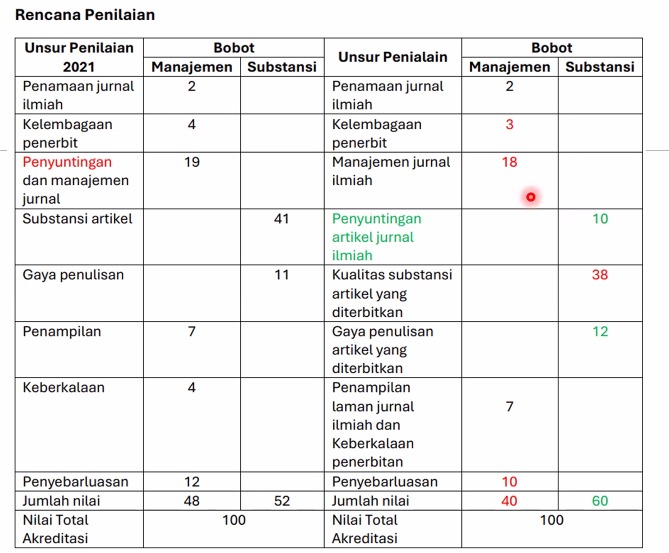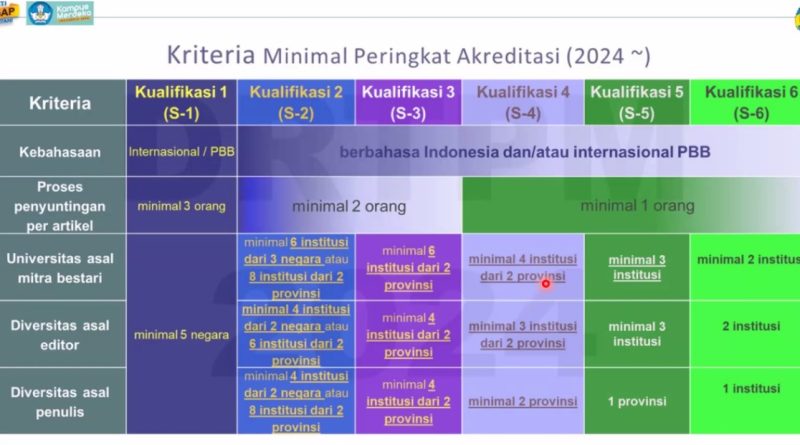accreditation rankings
The table presents the minimum criteria for journal accreditation rankings starting from 2024, structured into six qualification levels, namely S1 to S6. Each level reflects different requirements in terms of language, editorial processes, and diversity of contributors. For the language criterion, journals in qualification S1 must be published in international languages or official UN languages, while S2 to S6 can use Indonesian and/or international languages. In terms of the editing process per article, journals ranked S1 must have at least three editors, S2 requires two editors, while S4 to S6 may proceed with only one editor.
Regarding the origin of peer reviewers (mitra bestari), S1 journals must involve at least six institutions from three different countries or eight institutions from two provinces. For S2, the requirement is slightly reduced to a minimum of four institutions from two countries or six institutions from two provinces. S3 also requires six institutions from two provinces. For S4, at least four institutions from two provinces are needed, while S5 and S6 require only three and two institutions, respectively.
The diversity of editors is another important point. For S1 journals, editors must come from at least five different countries. S2 requires four institutions from two countries or six institutions from two provinces, while S3 requires four institutions from two provinces. S4 requires three institutions from two provinces, and S5 and S6 only need three institutions and two institutions, respectively. Similarly, the diversity of authors follows a gradual requirement: S1 demands authors from at least five countries, S2 requires four institutions from two countries or eight institutions from two provinces, S3 requires four institutions from two provinces, S4 requires authors from two provinces, and S5 and S6 require authors from one province and one institution, respectively.
In summary, the accreditation system places stricter demands for higher levels (S1 and S2), especially in internationalization, editorial team size, and diversity of peer reviewers, editors, and authors. Conversely, lower levels (S5 and S6) are more flexible, allowing fewer contributors and institutions. This tiered system ensures that journals aspiring for higher accreditation not only maintain quality but also embrace diversity, global visibility, and a robust editorial structure.


